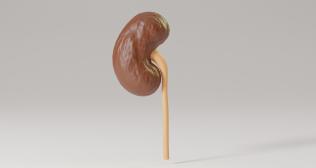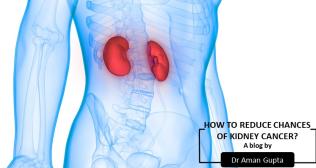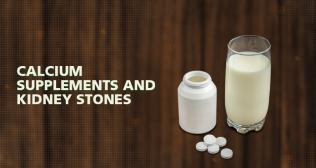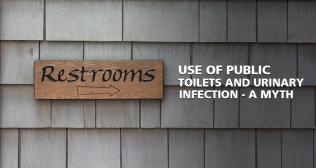Urinary Incontinence Urology
Urinary Incontinence Urology Jul 05, 2021
WHAT IS URINARY INCONTINENCE?
Urology is the branch of medicine concerned with the urinary system of both males and females. It also covers health conditions related to male genitalia and reproduction. There are several organs, and their components, that comprise the field of urology.
The Department of Urology and Renal Transplantation at Fortis Hospital, Vasant Kunj
offers advanced Urological care at par with international standards. The department endeavor diagnostic testing, minimally invasive urological-procedure with advanced treatments options (advance Laparoscopy, endourology & laser treatment) and high-quality comprehensive and personalized care for adults and pediatric urological diseases & conditions.
Urinary incontinence is an underdiagnosed and underreported delinquent that increases with age—affecting 50Â84% of the elderly in long term and at any age is more than twice as common in females than in males. Urinary Incontinence is a quality-of-life condition that can be disruptive, not only in social circumstances but also in one’s personal life. The best way to determine if therapy is indicated is to ask patients to describe how disruptive their incontinence is. The reality of the management of incontinence is that some individuals are tremendously bothered by very small amounts incontinence and others are not bothered by excessive amounts of incontinence.
Types of urinary incontinence
- Stress: Urine leakage associated with increased abdominal pressure from laughing, sneezing, coughing, climbing stairs, or other physical stressors on the abdominal cavity and, thus, the bladder.
- B) Urge: Involuntary leakage accompanied by or immediately preceded by urgency
- C) Mixed: A combination of stress and urge incontinence, marked by involuntary leakage associated with urgency and also with exertion, effort, sneezing, or coughing
- D) Functional: The inability to hold urine due to reasons other than neuroÂurologic and lower urinary tract dysfunction (eg, delirium, psychiatric disorders, urinary infection, impaired mobility)
Although we have become better at quantitating and assessing the magnitude of incontinence, the overall impact on each person is well-demonstrated. Despite quality-of-life questionnaires, including a variety of patient report outcome instruments, the most important assessment of whether or not therapy is indicated is the overall impact that individual is experiencing from his or her incontinence. This impact is not an immutable result-some people are more bothered by their urinary incontinence at some times than at others. Therefore, before initiating therapy, it is crucial to document the level of bother the individual is experiencing from his or her incontinence. Most community-dwelling women present with mixed incontinence, in that they demonstrate both stress and urgency symptoms.
Details regarding the clinical presentation should be sought when obtaining the history:
- Severity and quantity of urine lost and frequency of incontinence episodes
- Duration of the complaint and whether problems have been worsening
- Triggering factors or events (eg, cough, sneeze, lifting, bending, feeling of urgency, sound of running water, sexual
- activity/orgasm)
- Constant versus intermittent urine loss
- Associated frequency, urgency, dysuria, pain with a full bladder
- History of urinary tract infections (UTIs)
- Concomitant fecal incontinence or pelvic organ prolapse
- Coexistent complicating or exacerbating medical problems
- Obstetrical history, including difficult deliveries, grand multiparity, forceps use, obstetrical lacerations, and large babies
- History of pelvic surgery, especially prior incontinence procedures, hysterectomy, or pelvic floor reconstructive procedures
- Other urologic procedures
- Spinal and central nervous system surgery
- Lifestyle issues, such as smoking, alcohol or caffeine abuse, and occupational and recreational factors causing severe or
- repetitive increases in intraÂabdominal pressure
- Medications
Although various methods are used to differentiate, the two types of incontinence for treatment purposes. The disconnect between bladder over-activity and the sensory sensation appears to be related to the aging process in some individuals’ bladders and certainly contributes to the obfuscation of results obtained from the voiding diaries. A worrisome trend is that, as the population ages, there appears to be a subpopulation of individuals who experience de-stressor over-activity without associated urgency. Many women with incontinence actually demonstrate bacteriuria even on midstream cultures, and this may be related to the chronic contamination of the Perineum due to moisture. In general, these bacterial loads are not pathologic and do not result in infection. It is important to identify those individuals who do have symptoms and associated positive cultures; in these patients, a short trial of antibiotics may be beneficial. Asymptomatic bacteriuria, however does not require treatment and simply can be observed, as most women will spontaneously clear their bacteria without pathologic sequelae.
Certain comorbidities relating to coexisting conditions might affect the outcome of treatment and influence surgical technique and the specifics of patient counseling. For example, a patient with mixed and stress incontinence who has a large post-void residual volume and impaired detrusor contractility might be counseled that her urge symptoms are more likely than usual to persist and that urinary retention is more likely. Further, the technique of surgery might be tailored such that a mid-urethral, rather than bladder neck, sling is performed and it might be placed a bit looser than otherwise.
These comorbidities include:
- urinary urgency and urge incontinence (diagnosed by history, questionnaire, bladder diary);
- anatomic features such as pelvic organ prolapse (diagnosed by history, exam); urethral mobility and other urethral abnormalities such as intrinsic stricture disease (diagnosed by cystoscopy, cotton-swab test, ultrasound);
- the number and location of ureteral orifices e.g. ectopic (diagnosed by cystoscopy);
and/or
- the presence of detrusor overactivity, urethral obstruction, low bladder compliance and
impaired or absent detrusor contractility (diagnosed by uroflow, postvoid residual volume determination, urodynamics)
Nevertheless, an understanding of the specific comorbidities allows for individualized treatment planning, for informed consent and for the surgeon’s estimate of a successful outcome and the potential occurrence of complications such as incomplete bladder emptying, persistent or de novo urgency/urge incontinence and recurrent sphincter incontinence. Urodynamic evaluation may be of assistance in elucidating complex presentations of incontinence. The need for further evaluation of any given patient depends on a number of other factors including the degree of certainty and comfort that the physician has about the diagnosis, the impact that further studies will have on diagnosis, treatment options and treatment risks and likely outcomes as well as the desire and willingness of the patient to undergo further studies
The prognosis of a patient with incontinence is excellent with current health care. With improvement in information technology, well trained medical staff, and advances in modern medical knowledge, patients with incontinence should not experience the morbidity and mortality of the past. Although the ultimate wellÂbeing of a patient with urinary incontinence depends on the precipitating condition, urinary incontinence itself is easily treated and prevented by properly trained health care personnel.
The patient should be counseled regarding the surgical and nonsurgical options including both benefits and risks. Choice of the procedure should be made as a collaborative effort between the surgeon and patient and should consider both patient preferences and the surgeon’s experience and judgment
The primary efficacy outcome was the resolution of stress incontinence as measured two ways—patients who were completely dry (cured/dry) or patients who showed improvement (cured/dry/improved). The cured/dry/improved measure may include patients who were completely dry. Secondary efficacy outcomes dealt with changes in urgency
In stress incontinence, the improvement rate with oral medication is 19Â74%; improvement rates with muscle exercise and surgery, improvement rates are 87% and 88%, respectively. In urge incontinence, the improvement rate is higher with bladder training (75%) than with the use of anticholinergics (44%). Surgical options for urge incontinence are limited and have a high morbidity. In mixed incontinence, bladder training and pelvic exercises result in higher improvement rate than the use of oral medications. In overflow incontinence, medications and surgery are very effective in improving symptoms.
The five major types of procedures (injectables, laparoscopic suspensions, midurethral slings, pubovaginal slings and retropubic suspensions), although not equivalent, may be considered
Injectable agents may provide immediate relief for some patients and are an option for patients who do not wish to undergo more invasive surgery and who understand that both efficacy and duration are inferior to surgery. Other possible indications for the use of injectable agents include patients who are elderly, those who are at high anesthetic risk or those willing to accept an improvement in their incontinence without necessarily achieving dryness.
Without effective treatment, urinary incontinence can have an unfavorable outcome. Prolonged contact of urine with the unprotected skin causes contact dermatitis and skin breakdown. If left untreated, these skin disorders may lead to pressure sores and ulcers, possibly resulting in secondary infections.




















